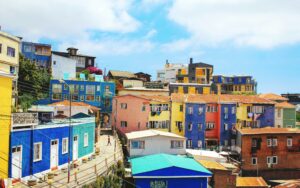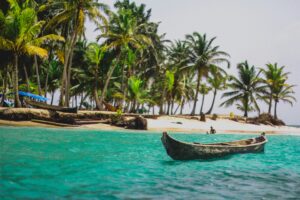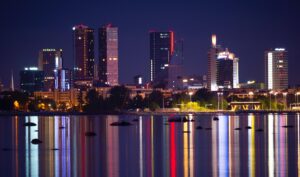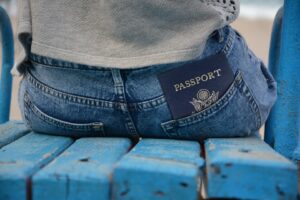Are you considering a trip to the United States, or perhaps even relocating there? If so, it’s essential to understand the different types of visas available and the requirements for entry. This article will provide an overview of the Visa Waiver Program, delve into the specifics of the B1 and B2 visas, and explore the diverse range of immigration visas available for those looking to make a more permanent move. With this information, you’ll be better prepared to navigate the complex world of US immigration and ensure a smoother journey to the land of opportunity.

Visa Waiver Program
The Visa Waiver Program (VWP) is a convenient option for citizens of 39 countries who wish to travel to the United States for short stays without obtaining a visa. Participants in the program include:
Andorra, Australia, Austria, Belgium, Brunei, Chile, Czech Republic, Denmark, Estonia, Finland, France, Germany, Greece, Hungary, Iceland, Ireland, Italy, Japan, Latvia, Liechtenstein, Lithuania, Luxembourg, Malta, Monaco, Netherlands, New Zealand, Norway, Poland, Portugal, San Marino, Singapore, Slovakia, Slovenia, South Korea, Spain, Sweden, Switzerland, Taiwan, and the United Kingdom.
To be eligible for the VWP, travelers must have a valid Electronic System for Travel Authorization (ESTA) approval, hold a valid e-passport, and plan to stay in the US for 90 days or less for business, tourism, or medical purposes. The program not only makes travel more accessible for citizens of participating countries, but it also strengthens security and fosters economic growth through increased tourism and business travel.

B1 and B2 Visas
The B1 and B2 visas are non-immigrant visas designed for temporary visits to the United States. The B1 visa is specifically for business travelers who need to engage in activities such as attending meetings, conferences, or negotiations. This visa does not grant authorization to work or receive payment from a US-based company. The B2 visa, on the other hand, is tailored for tourists, those visiting family and friends, or seeking medical treatment. It is important to note that these visas do not permit the holder to study, work, or remain in the US indefinitely. To obtain a B1 or B2 visa, applicants must demonstrate strong ties to their home country and provide evidence that they will return after their visit.
Immigration Visas
EB-1 Visa: This visa is reserved for individuals with extraordinary ability in the arts, sciences, education, business, or athletics, outstanding professors and researchers, and multinational executives or managers. To qualify, applicants must demonstrate sustained national or international acclaim and recognition in their field.
EB-2 Visa: The EB-2 visa is designed for professionals with advanced degrees or exceptional ability in the sciences, arts, or business. Applicants in this category may also qualify for a National Interest Waiver, which waives the job offer and labor certification requirements if it can be demonstrated that their work is in the national interest.
EB-3 Visa: This visa category is for skilled workers, professionals, and other workers. Skilled workers are those with at least two years of experience or training, while professionals hold a US baccalaureate degree or its foreign equivalent. Other workers include those in positions requiring less than two years of experience or training.
EB-4 Visa: Intended for special immigrants, including religious workers, employees of US government agencies abroad, certain physicians, and Iraqi and Afghan translators or interpreters who have worked for the US government. This visa category also covers other special immigrant categories, such as international broadcasters and retired NATO-6 employees.
EB-5 Visa: The EB-5 visa is available to entrepreneurs who invest a minimum of $900,000 in a new commercial enterprise that creates at least ten full-time jobs for US workers. This investment must be made in a targeted employment area, which is either a rural area or an area with high unemployment.
K Visas: K visas are for the fiancé(e)s and spouses of US citizens who are looking to enter the United States to marry their US citizen partner. The K-1 visa is for fiancé(e)s, while the K-3 visa is for spouses. These visas require proof of a genuine relationship and intent to marry within a specific timeframe.
V Visas: The V visa is for the spouses and unmarried children under 21 of US lawful permanent residents (green card holders). This visa allows them to live and work in the United States while they wait for their immigrant visa number to become available, as there can be significant waiting times due to annual visa limits.

Visa Categories for Specific Purposes
R-1 Visa: The R-1 visa is designed for religious workers coming to the United States to work in a religious occupation or vocation, either as ministers or in a professional capacity. To qualify, applicants must be members of a religious denomination with a bona fide non-profit religious organization in the US for at least two years before applying for the visa.
F and M Visas: The F-1 and M-1 visas cater to international students. The F-1 visa is for students attending academic institutions, while the M-1 visa is for those enrolled in vocational or non-academic programs. These visas allow students to pursue their studies in the US and engage in limited on-campus employment or practical training.
J-1 Visa: The J-1 visa is an exchange visitor visa for individuals participating in various programs, such as internships, traineeships, research, teaching, or au pair opportunities. These programs aim to foster cultural exchange and mutual understanding between the US and other countries.
O Visas: The O visa category is for individuals with extraordinary ability or achievement in the sciences, arts, education, business, athletics, or the motion picture and television industry. The O-1 visa is for those with extraordinary ability, while the O-2 visa is for essential support personnel accompanying the O-1 visa holder.
H Visas: These visas are for temporary workers in various fields, including specialty occupations (H-1B), agricultural workers (H-2A), and non-agricultural workers (H-2B). The H-1B1 visa is for professionals from Chile and Singapore, while the H-3 visa is for trainees or special education exchange visitors.
L Visas: The L-1 visa is for intracompany transferees, allowing employees of multinational companies to transfer to a US branch, affiliate, or subsidiary. The L-1A visa is for managers and executives, while the L-1B visa is for employees with specialized knowledge.
U Visas: The U visa is for victims of certain crimes who have suffered substantial mental or physical abuse and are willing to assist law enforcement and government officials in the investigation or prosecution of criminal activity.
T Visas: The T visa is for victims of human trafficking who are willing to assist law enforcement in the investigation or prosecution of human trafficking cases and face severe hardship if removed from the United States.
Q Visas: The Q visa is for individuals participating in international cultural exchange programs, which provide practical training and employment, along with sharing the history, culture, and traditions of the participant’s home country.

Visa Application Process
Applying for a US visa may seem daunting, but understanding the process can make it more manageable.
Generally, the first step is to determine the appropriate visa category based on your purpose of travel or immigration. Once you’ve identified the correct visa type, complete the appropriate online application form (such as DS-160 for non-immigrant visas or DS-260 for immigrant visas). You will need to upload a passport-sized photo that meets the specific requirements outlined by the US Department of State.
After submitting the application form, you will be required to pay the applicable visa fee. Keep the receipt, as you may need it to schedule your visa appointment.
Next, schedule an appointment at the US Embassy or Consulate in your country for an interview, where you will need to present your application confirmation page, photo, passport, and any supporting documents relevant to your visa category.
For non-immigrant visa applicants, it’s crucial to demonstrate strong ties to your home country and convince the consular officer that you intend to return after your visit. Immigrant visa applicants should be prepared to provide proof of eligibility based on their specific visa category.
Remember that processing times for visas can vary, so it’s best to apply well in advance of your planned travel or immigration date. By following these steps and preparing thoroughly, you can navigate the US visa application process with greater confidence and ease.










